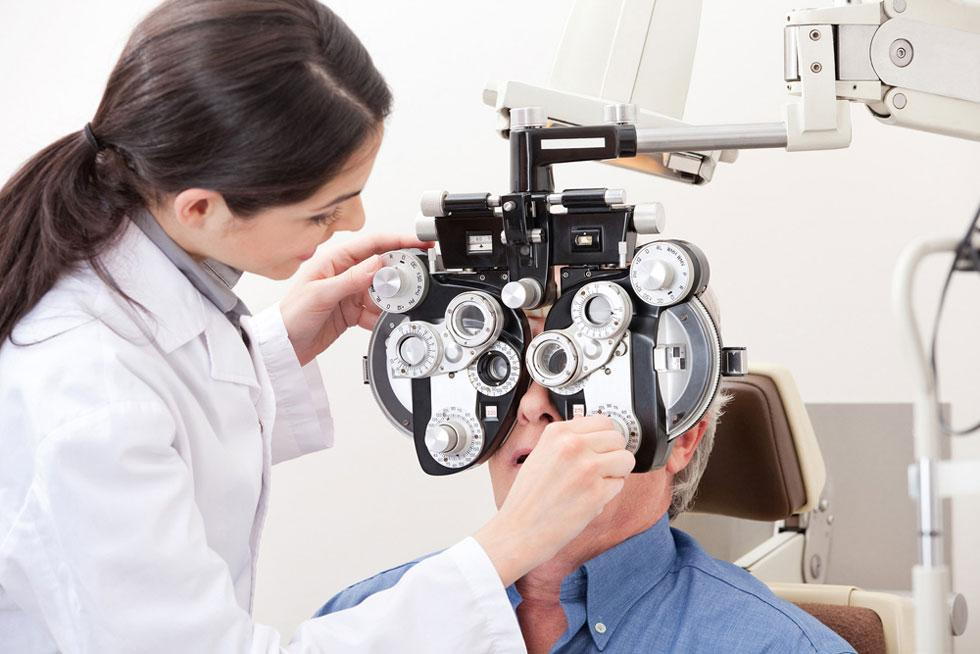All Categories
Featured
Laser eye surgery has evolved significantly over the previous couple of years, offering much safer and a lot more effective services for vision adjustment. Constant innovations in innovation and techniques are making these treatments significantly interesting individuals seeking liberty from glasses or call lenses. Let's analyze a few of the most exciting advancements that are redefining the area of laser eye surgery.
SmartPulse is an advanced development integrated right into advanced surface area ablation procedures like PRK (Photorefractive Keratectomy) This modern technology ensures smoother corneal surfaces post-surgery, leading to much faster aesthetic healing and improved convenience during the recovery procedure. Individuals undergoing SmartPulse-assisted PRK commonly report enhanced visual clearness sooner than with typical methods.
Wavefront-guided technology permits doctors to produce a very topographic map of the eye's optical system, recognizing also the tiniest blemishes. These wavefront dimensions allow specific adjustments, enhancing not just vision intensity but likewise contrast sensitivity and night vision. This modern technology is especially useful for people with higher-order aberrations that standard techniques may overlook.
Typical LASIK procedures involve producing a corneal flap with a mechanical blade. Nevertheless, developments have introduced all-laser LASIK, which uses femtosecond lasers to produce the flap with extraordinary accuracy and predictability. This bladeless approach decreases difficulties and improves the total security and dependability of the treatment.
Tiny Laceration Lenticule Removal (SMILE) has actually become a minimally invasive option to LASIK. By utilizing a femtosecond laser to remove a little piece of corneal tissue (lenticule) with a tiny cut, SMILE maintains corneal integrity and minimizes the threat of completely dry eye disorder. This method is specifically appropriate for individuals with high myopia.
![]()
Astigmatism improvement has seen substantial renovations with customized laser treatments. Advanced mapping modern technologies allow accurate reshaping of uneven corneas, resulting in sharper and a lot more consistent vision. These tailored procedures are assisting clients attain far better outcomes than ever in the past.
The most recent generations of excimer lasers run at higher speeds and with better precision, enabling shorter therapy times and faster healing. These lasers likewise include real-time monitoring systems that change for any type of eye movements throughout the treatment, making sure the laser stays perfectly aligned.
![]()
Expert system (AI) is playing a pivotal function in laser eye surgery by assessing complex information collections to refine medical preparation and implementation. AI-powered tools help specialists in attaining optimum outcomes, tailoring each treatment to the individual's unique vision account.
Laser modern technology isn't restricted to refractive surgical treatment. It is now being made use of for healing objectives, such as dealing with corneal marks, managing keratoconus, and doing corneal cross-linking. These advancements are expanding the extent of laser applications, improving top quality of life for people with a range of eye conditions.
Verdict
The field of laser eye surgical treatment continues to development, offering a broader array of alternatives and far better results for patients. From boosted precision with AI to minimally invasive methods like SMILE, these breakthroughs are changing just how we correct vision and deal with eye problems. If you're taking into consideration laser eye surgery, seeking advice from a professional will certainly aid you discover the latest technologies and identify the very best choice for your vision needs.
- SmartPulse Innovation
SmartPulse is an advanced development integrated right into advanced surface area ablation procedures like PRK (Photorefractive Keratectomy) This modern technology ensures smoother corneal surfaces post-surgery, leading to much faster aesthetic healing and improved convenience during the recovery procedure. Individuals undergoing SmartPulse-assisted PRK commonly report enhanced visual clearness sooner than with typical methods.
- High-Definition Vision with Wavefront Analysis
Wavefront-guided technology permits doctors to produce a very topographic map of the eye's optical system, recognizing also the tiniest blemishes. These wavefront dimensions allow specific adjustments, enhancing not just vision intensity but likewise contrast sensitivity and night vision. This modern technology is especially useful for people with higher-order aberrations that standard techniques may overlook.
- All-Laser LASIK for Boosted Safety
Typical LASIK procedures involve producing a corneal flap with a mechanical blade. Nevertheless, developments have introduced all-laser LASIK, which uses femtosecond lasers to produce the flap with extraordinary accuracy and predictability. This bladeless approach decreases difficulties and improves the total security and dependability of the treatment.
- SMILE for Minimal Invasiveness
Tiny Laceration Lenticule Removal (SMILE) has actually become a minimally invasive option to LASIK. By utilizing a femtosecond laser to remove a little piece of corneal tissue (lenticule) with a tiny cut, SMILE maintains corneal integrity and minimizes the threat of completely dry eye disorder. This method is specifically appropriate for individuals with high myopia.

- Personalized Therapies for Astigmatism
Astigmatism improvement has seen substantial renovations with customized laser treatments. Advanced mapping modern technologies allow accurate reshaping of uneven corneas, resulting in sharper and a lot more consistent vision. These tailored procedures are assisting clients attain far better outcomes than ever in the past.
- Faster Recovery with Enhanced Lasers
The most recent generations of excimer lasers run at higher speeds and with better precision, enabling shorter therapy times and faster healing. These lasers likewise include real-time monitoring systems that change for any type of eye movements throughout the treatment, making sure the laser stays perfectly aligned.
- AI-Driven Accuracy

Expert system (AI) is playing a pivotal function in laser eye surgery by assessing complex information collections to refine medical preparation and implementation. AI-powered tools help specialists in attaining optimum outcomes, tailoring each treatment to the individual's unique vision account.
- Beyond Vision Improvement: Therapeutic Applications
Laser modern technology isn't restricted to refractive surgical treatment. It is now being made use of for healing objectives, such as dealing with corneal marks, managing keratoconus, and doing corneal cross-linking. These advancements are expanding the extent of laser applications, improving top quality of life for people with a range of eye conditions.
Verdict
The field of laser eye surgical treatment continues to development, offering a broader array of alternatives and far better results for patients. From boosted precision with AI to minimally invasive methods like SMILE, these breakthroughs are changing just how we correct vision and deal with eye problems. If you're taking into consideration laser eye surgery, seeking advice from a professional will certainly aid you discover the latest technologies and identify the very best choice for your vision needs.
Latest Posts
Explore Limited-Time Auto Repair Offers in Chicago at Montclare Auto Repair
Published May 27, 25
1 min read
Explore Auto Services & More: Complete Auto Care Solutions from Montclare Auto Repair
Published May 27, 25
1 min read
Specialist Residential Roof Solutions You Can Count On
Published May 25, 25
1 min read
More
Latest Posts
Explore Limited-Time Auto Repair Offers in Chicago at Montclare Auto Repair
Published May 27, 25
1 min read
Explore Auto Services & More: Complete Auto Care Solutions from Montclare Auto Repair
Published May 27, 25
1 min read
Specialist Residential Roof Solutions You Can Count On
Published May 25, 25
1 min read